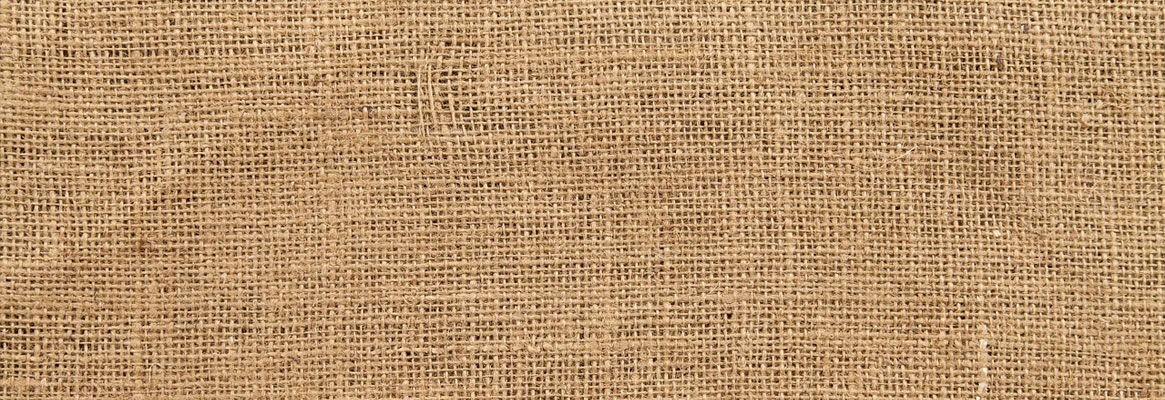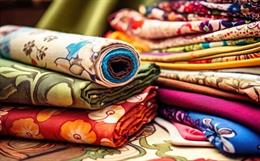Kumuruguru College
PSG College of Technology
Coimbatore, TN.
Abstract
Now a days international standing involved in research onobtaining and processing natural raw material ( Jute, flax, sisal, coir, mesta,cotton, ramie, wool etc.). It carries out research on Agrotech, Geotech,Buildtech, Oekotech, Mobiletech, Floor Coverings, Speciality garments andspinning, weaving, knitting, netting with nonwoven technology. This paperhighlights the new avenue for jute industry to improve market with diversified products in globalize economy.
1. Introduction
Environmental and economical concerns are stimulatingresearch in development of new materials for agriculture, civil engineeringconstruction, furniture, light weight disposable, packaging, and automotiveindustries particularly attractive is new materials in which a good part isbased on natural renewable resources, preventing further stresses on theenvironment by depleting dwindling wood resources for forests. Examples of suchraw material sources are annual growth native crops / plants / fibres which areabundantly available in tropical regions. These natural fibres like jute,sisal, pine, mesta, coir, ramie, cotton etc. have been used for hundreds ofyears for many applications such as packaging materials, ropes, bags,composite, etc.
If new uses of fast growing, native plants can be developedfor high value, non-timber based materials could reduce the use of traditionalmaterials such as plastics, wood and minerals for some applications. Regulationon using synthetic materials, growing environmental awareness and economicconsiderations are the major dividing force to utilize nature given resources.Also biodegradability and eco-friendliness of products, besides exclusiveappearance have a huge potential for international marketing.
Global production of agricultural fibres continues to be 24million tones per years. Among them cotton claims the major portion about 17-20million tonnes, next jute 3-3.5 million, flax 0.56-0.58 , ramie and hemp sharealmost usually about 0.06 0.08 million tones while production of others isinsignificant. Mechanical processing of long strand fibres has almostuniversal, processing technology as followed for jute.
Most common products from the fibres are yarn, cloth andbag, nonwoven fabrics and bleached, dye and printed fabric for decorative. Fromthe fibres technical textiles like geotextiles, agrotextiles, automotivetextiles and home textiles are also produced.
2. Jute Functional Textiles
2.1. Agrotech
Needle punched non-woven of 120-150 gsm can well be used asagricultural mulch for cultivation of bhindi, mung, kolai, maize, marigold anddahlia. Satisfactory results have also been obtained with mousambi andcauliflower. The mechanism of action is probably control of weeds andsupplementation of nutrients to soil by decay of jute fabric. Furthermore, jutecan take up water about 5 times of its weight and can slowly release it as perrequirement of plants.
Horticultural pots using non-woven of 180-200 gsm can wellbe used for maintenance and transportation of seedlings of forest trees such asmehagini, shaal and shegun. One of the advantages using the pots is that theseneed not be removed before plantation as is being done with plastic pots.
2.2. Floor coverings
Jute and jute blended floor coverings can well replace conventional carpets in a big way for price factor and environment-friendliness. Upper surface of the floor coverings are designed by screen printing method with localized application of pigment in a thickened form while biodegradable adhesive was sprayed at the back side. Printed pattern ranges from simple geometric designs (stripes, spots etc.) of single colour to complex designs with multiple colours. This study has been carried out in collaboration with M/s. Fort Gloster Jute Mills, Howrah, West Bengal.
2.3. Geotextiles
Jute geo-textiles particularly non-woven of 450-500 gsm are suitable for road construction. The longevity of the roads were found to be better than the roads where no geo-textiles were laid in various stress prone areas such as high vibration zone adjoining railway tracks, sea shores and hilly areas. Jute fabric has got high drapability and is compatible with contour of the soil with good filtration and water absorption capacities. These function through reinforcement of soil and separation of soil and stone layers. The fabrics hold the soil materials for a certain length of time after which it becomes a part and parcel of soil. Plastic geo-textiles when used always create phase barriers and slippage failure. All the theoretical study on suitable fabric structure and depth of laying as per nature of the soil has been conducted
2.4. Mobiletech
In collaboration with Birla Jute Limited, West Bengal rigid and moulded products consisting of 45% jute and 55% polypropylene were developed for making door panels of cars. These will certainly be less expensive than all glass reinforced products and good response are being received in this regard. The Fibers work is in progress for making automobile needle punched carpets from sandwich blend of jute and polypropylene. These have satisfactory resiliency and drapability and the problem of generation of static electricity does not appear. The warmth of carpets as measured by thermal insulation value of the products was found quite acceptable. We are getting a good response from the automobile sector for a continuous supply of such carpets.
2.5. Oekotech
Jute and sisal were blended in 50:50 ratio for making lustrous wrappers and upholsteries.Blend of jute and sisal can be used for making scrubbers which is a substitute of synthetic scrubbers. Lightweight disposable bags of 30-75 gsm made out of jute by non-woven and knitting technology were found suitable to carry loads of 0.5 to 10 kg.
2.6. Speciality garments
Warm over-garments made of jute with motifs and designs have become a reality and are well accepted by consumers at large for their warmth, eco-friendliness and aesthetic appeal. Fire retardant jute-cotton union fabric was also developed with textile grade resin in presence of phosphate. The resin uptake was 2-3% while the phosphorus uptake was 3-4% for achieving optimum fire retardance. The N-P synergistic effect imparted considerable fire retardance with limited oxygen index more than 30. Hand gloves for industrial use can be made from the union fabric and found suitable in steel and foundry industries for handling materials around 1500C.
3. Marketing and Economics of Jute Diversified Products
Cost of average kg of natural fibers is given below:
(These details are collected from NIRJAFT)
Jute : - Rs. 10/-
Sisal: - Rs. 25/-
Ramie Rs. 70/-
Flax Rs. 30/-
The Jute fabrics are available according to GSM of materials:
300 g/m2 Rs. 11/-
500 g/m2 - Rs. 13/-
700 g/m2 - Rs. 15/-
Jute / cotton blended fabric Rs. 45/- per meter.
Average cost of diversified fabric is around US $1.8 / meter and same fabric may fetch price between US $ 8 to 12 depending upon quality, design, finish. Above statistics show prospect of value addition may vary around 400% to 600% between cost and retail price in Europe. If Indian Jute mills diversify 20% of their production i.e. 8.4 million square metres fabric would likely earn Rs. 300 crores or US $74 million (approx.)
4. Conclusion
Now a days done excellent research work to diversify the end uses of Jute to suit the technical and engineering aspects of several functions. Enormous amount of research has gone into all areas of jute processing starting from development of new applications like agrotextiles, geotextiles, composites and garments which will improve demand of jute for use in Industrial, technical and high performance fabric
To read more articles on Textile, Industry, Technical Textile, Dyes & Chemicals, Machinery, Fashion, Apparel, Technology, Retail, Leather, Footwear & Jewellery, Software and General please visit http://articles.fibre2fashion.com
To promote your company, product and services via promotional article, follow
this link: http://www.fibre2fashion.com/services/article-writing-service/content-promotion-services.asp








